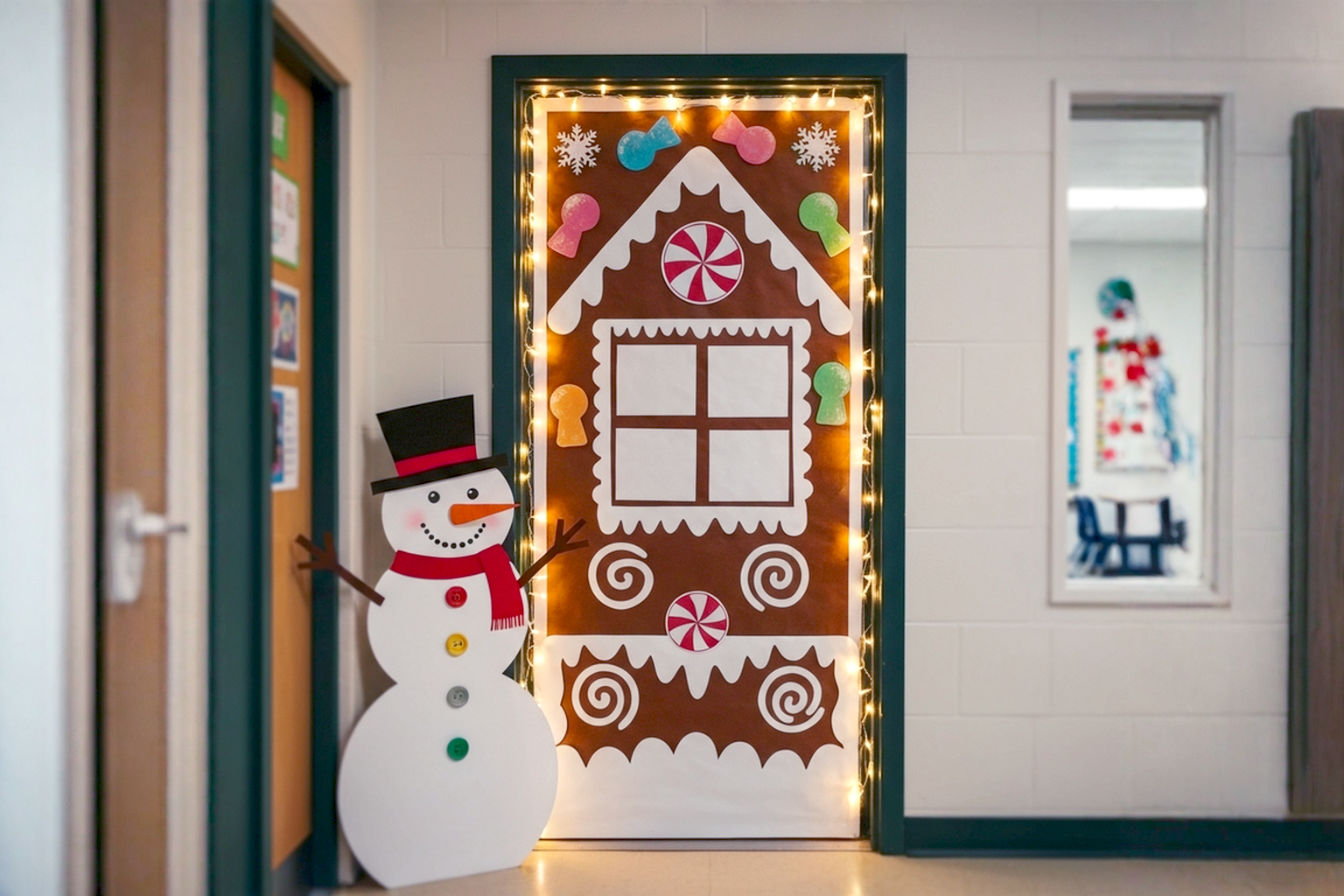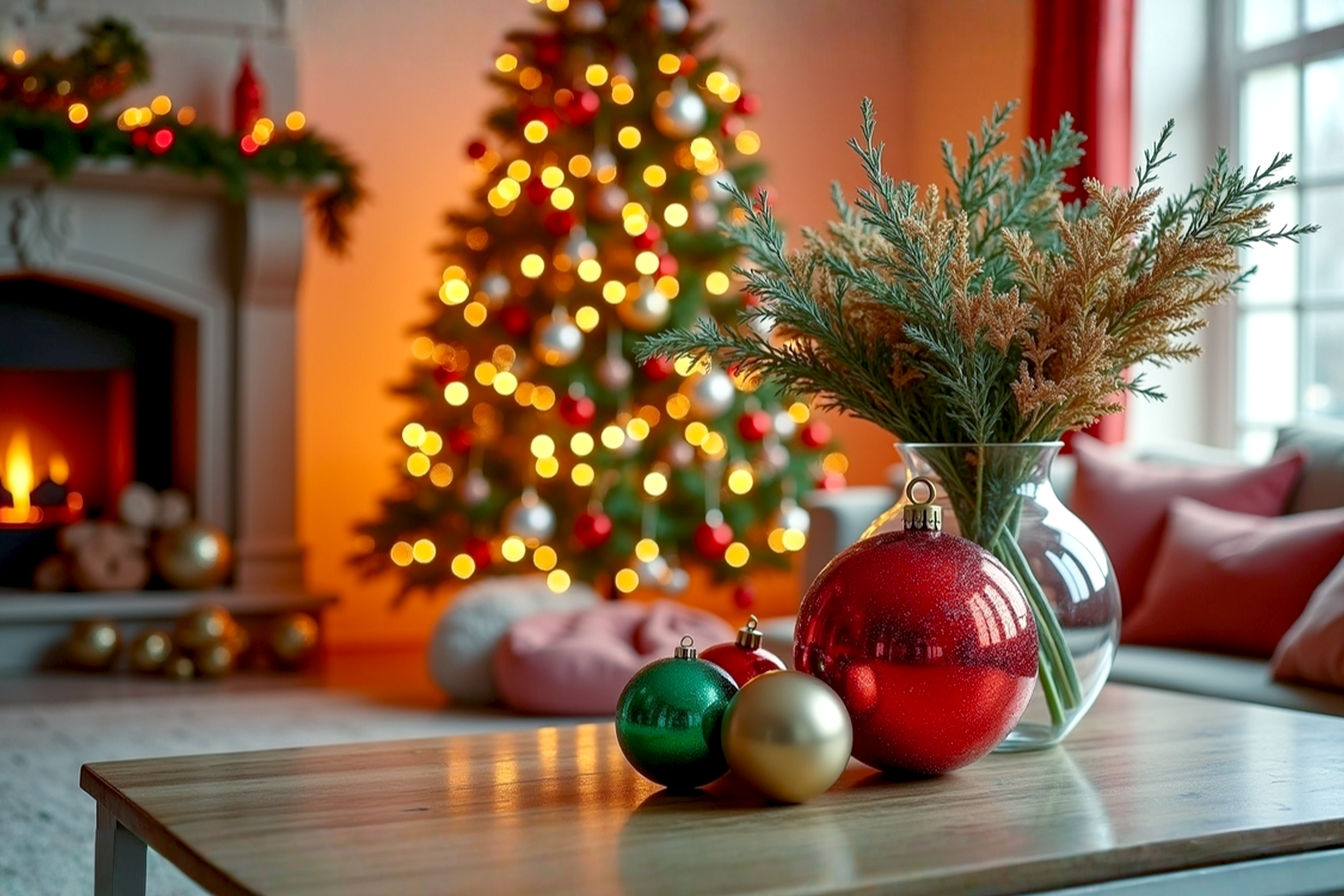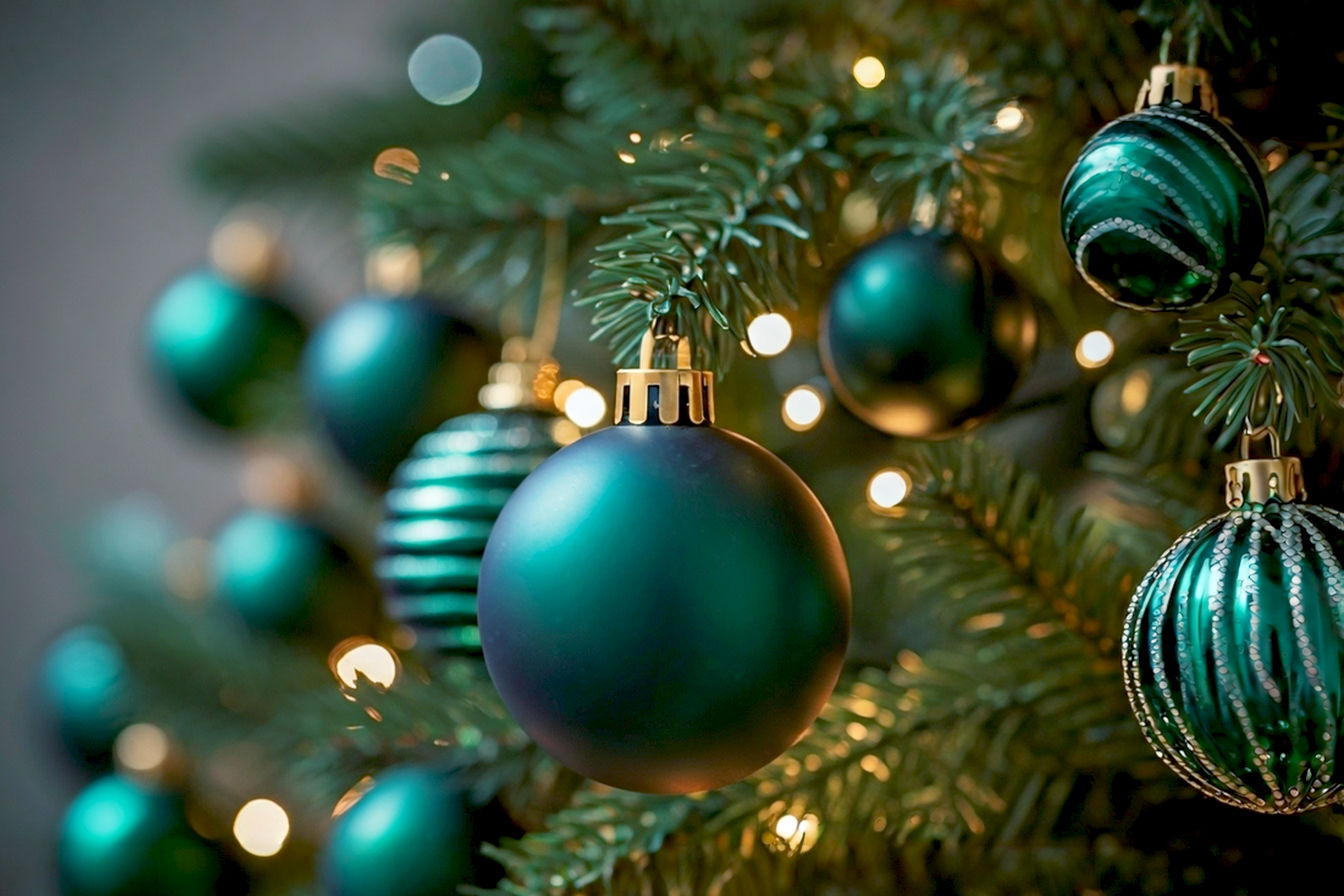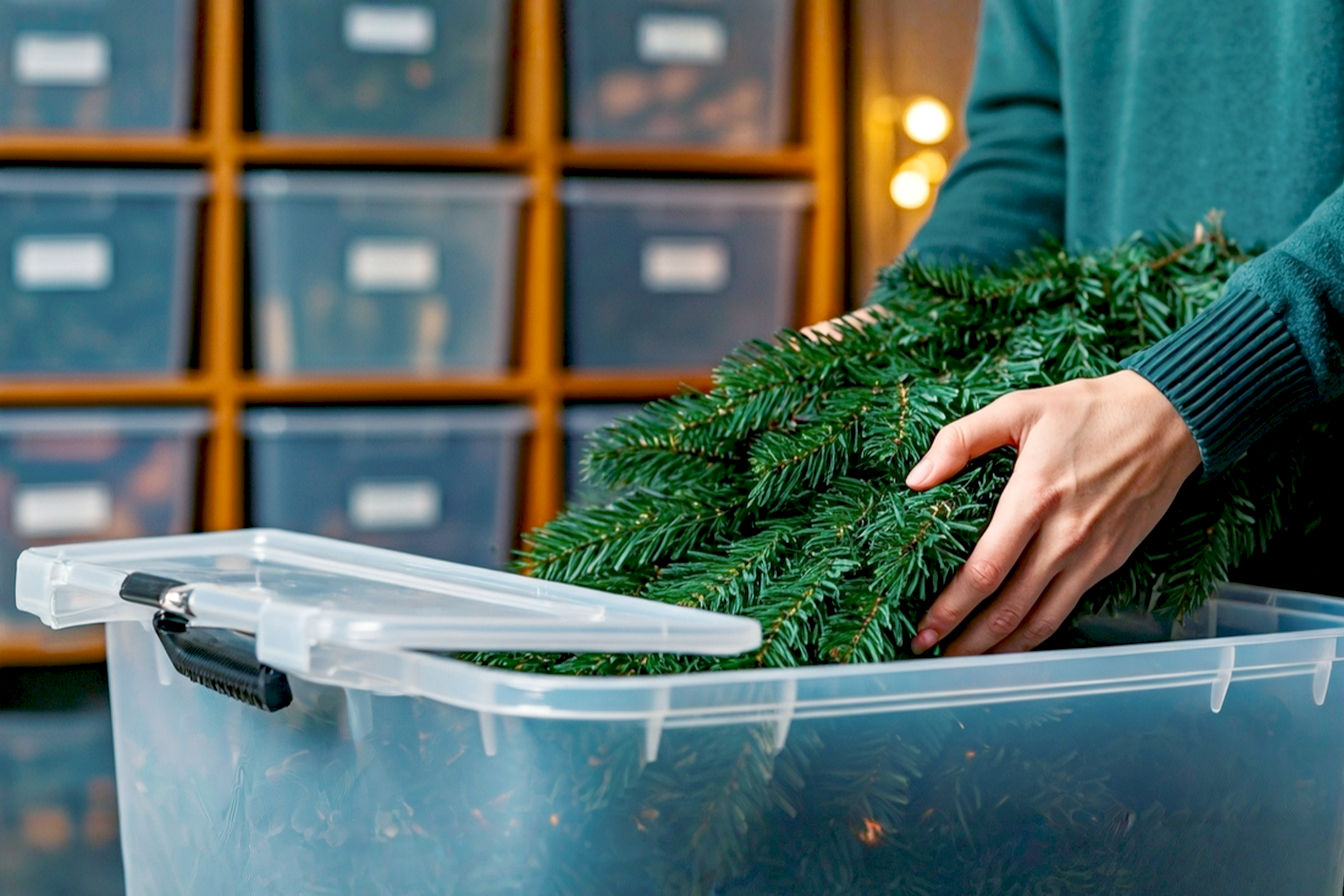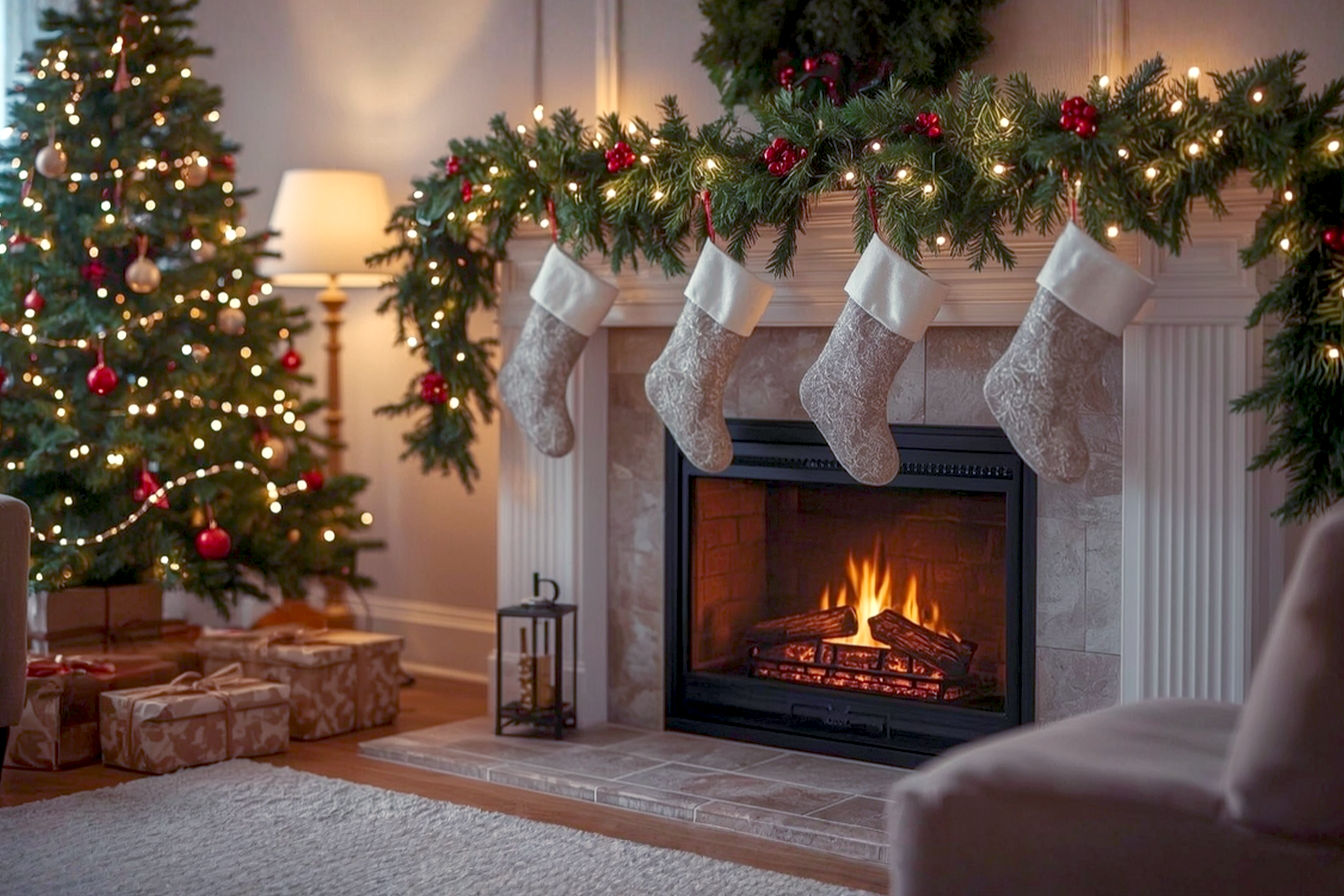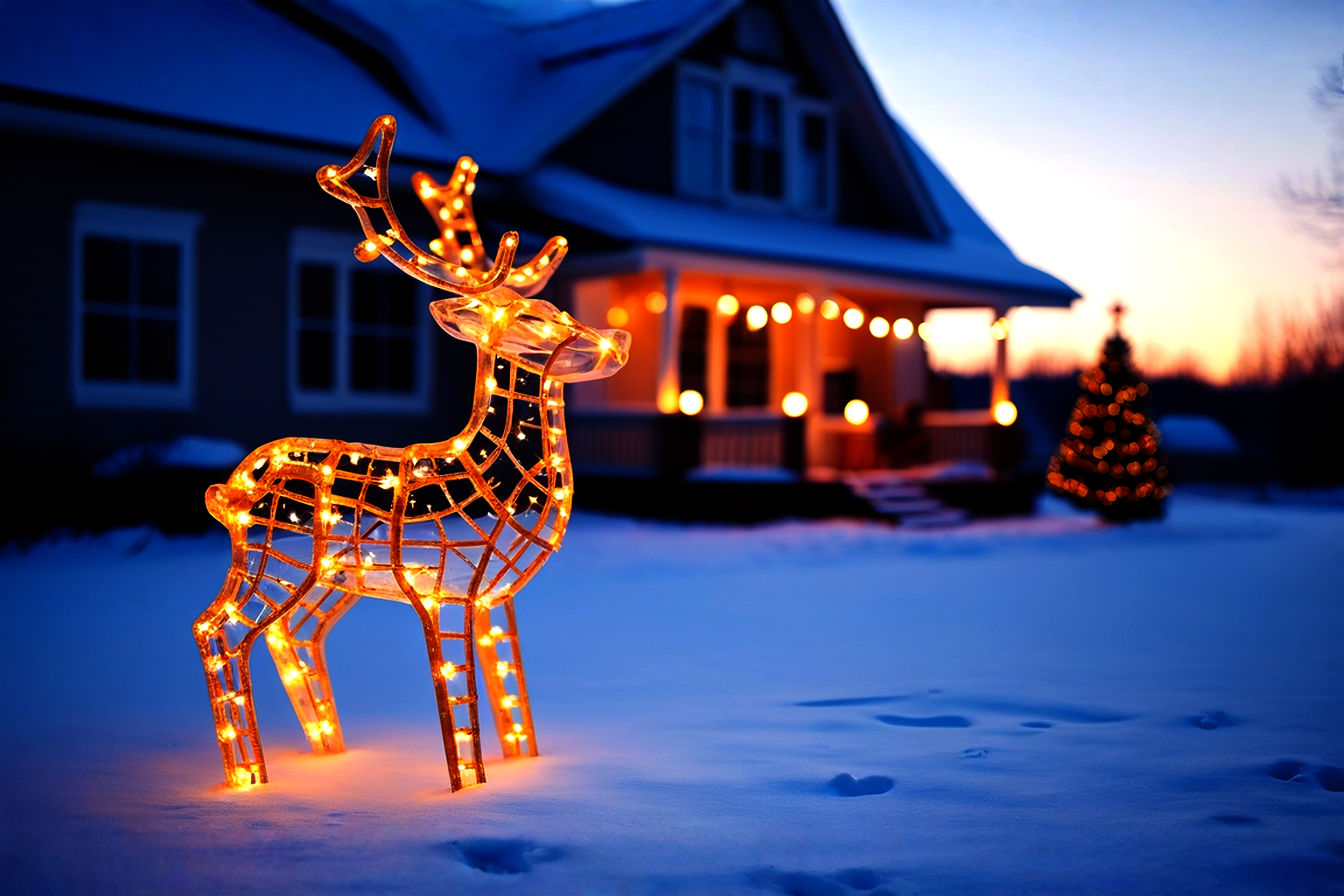This post may contain affiliate links. If you make a purchase through these links, we may earn a commission at no additional cost to you.
As the festive season approaches, transforming your home into a winter wonderland often begins right at your front door. A beautifully adorned Christmas wreath isn’t just a decoration; it’s a warm welcome, a symbol of holiday cheer, and a reflection of your personal style. But with countless options available, how do you choose the perfect one? This comprehensive guide will walk you through every aspect of selecting an Xmas wreath, ensuring your door makes a stunning statement this holiday season. We’ll explore everything from traditional designs to modern trends, materials, sizing, and even how to make your wreath last for years to come.
Why a Christmas Door Wreath Matters
A Christmas door wreath serves as the centerpiece of your outdoor holiday decor. It’s the first thing guests see, setting the tone for the festive atmosphere inside your home. Beyond its aesthetic appeal, the wreath carries rich historical significance, symbolizing welcome, continuity, and eternal life in many cultures. Choosing the right one allows you to express your festive spirit and create a memorable first impression. It’s more than just greenery; it’s a piece of art that invites joy.
Real vs. Artificial Christmas Wreaths: A Detailed Comparison
One of the first and most significant decisions you’ll face is whether to opt for a real Christmas wreath or an artificial Christmas wreath. Both have distinct advantages and disadvantages that can influence your choice based on your lifestyle, budget, and desired aesthetic.
The Charm of a Real Christmas Wreath
Real Christmas wreaths offer an unparalleled natural beauty and an authentic, fresh scent that artificial options simply can’t replicate. They bring a piece of the outdoors in, creating a truly organic holiday feel.
Advantages of Real Wreaths:
- Authentic Aroma: The most compelling reason for many is the fresh, invigorating scent of pine, fir, or cedar. This natural fragrance instantly evokes the holiday season.
- Natural Aesthetics: Each real wreath is unique, with subtle variations in branch length, needle texture, and color. This organic imperfection adds to its charm.
- Biodegradability: At the end of the season, real wreaths can be composted, making them an environmentally friendly choice.
Disadvantages of Real Wreaths:
- Limited Lifespan: Fresh wreaths typically last only a few weeks, especially indoors or in warmer climates. They can dry out, turn brittle, and drop needles.
- Maintenance: They require misting to stay fresh longer and can be messy as needles shed.
- Cost: Real wreaths often need to be purchased annually, which can add up over time.
- Allergies: For some, the natural materials can trigger allergies.
The Practicality of an Artificial Christmas Wreath
Artificial Christmas wreaths have come a long way in terms of realism and offer a durable, low-maintenance alternative to fresh greenery. They are a popular choice for their longevity and versatility.
Advantages of Artificial Wreaths:
- Durability and Longevity: A high-quality artificial wreath can last for many years, making it a cost-effective investment over time. They won’t dry out or shed needles.
- Low Maintenance: No watering, misting, or constant cleanup of fallen needles is required.
- Variety: Available in an endless array of styles, colors, and pre-decorated options, including flocked, glittered, and pre-lit designs.
- Hypoallergenic: Ideal for individuals with allergies to natural evergreens.
- Consistency: They maintain their appearance throughout the entire holiday season and from year to year.
Disadvantages of Artificial Wreaths:
- Lack of Scent: They don’t offer the natural fragrance of a real wreath. However, you can use scented pinecones or sprays to add aroma.
- Environmental Impact: Made from synthetic materials, they are not biodegradable and contribute to plastic waste if not reused for many years.
- Initial Cost: While cost-effective long-term, the upfront price for a high-quality artificial wreath can be higher than a single real wreath.
Technical Detail: Materials in Artificial Wreaths High-quality artificial wreaths often use two primary materials for their needles:
- PVC (Polyvinyl Chloride): This is the most common material. PVC needles are typically flat, cut strips of plastic that are twisted onto wire branches. They are durable and affordable but can sometimes look less realistic up close.
- PE (Polyethylene): Also known as “True Needle” or “Feel Real” technology, PE needles are injection-molded to mimic the three-dimensional shape, texture, and color variations of real evergreen needles. Wreaths made with 100% PE or a blend of PE and PVC offer a much more realistic appearance and feel.
Exploring Christmas Wreath Styles and Themes
The style of your holiday wreath should complement your home’s architecture and your overall Christmas decor theme. There’s a vast spectrum of designs, from timeless classics to contemporary statements.
Traditional Christmas Wreaths
Traditional Christmas wreaths often feature classic elements that evoke a sense of nostalgia and timeless holiday spirit. They are typically lush and green, adorned with familiar festive motifs.
- Classic Evergreen: Dominated by natural-looking evergreen branches (fir, pine, cedar) with minimal embellishments.
- Red and Green: The quintessential Christmas color scheme, featuring red berries, ribbons, and ornaments against green foliage.
- Natural Elements: Incorporates pinecones, dried oranges, cinnamon sticks, and burlap for a rustic, earthy feel.
- Victorian: Often includes velvet ribbons, dried flowers, lace, and delicate ornaments, reflecting a historical elegance.
Modern Christmas Wreaths
Modern Christmas wreaths embrace clean lines, minimalist designs, and often unexpected materials or color palettes. They are perfect for contemporary homes.
- Minimalist: Features sparse greenery, geometric shapes, or single, striking ornaments. Focuses on simplicity and negative space.
- Metallic Accents: Incorporates gold, silver, rose gold, or copper elements, often in sleek, polished finishes.
- Unconventional Materials: Wreaths made from felt, yarn, wire, or even abstract shapes rather than traditional foliage.
- Unique Color Schemes: Moves beyond red and green, embracing blues, purples, black and white, or even monochromatic themes.
Rustic and Farmhouse Wreaths
These styles emphasize natural textures, distressed finishes, and a cozy, inviting aesthetic. They often use organic materials and a more understated color palette.
- Burlap and Twine: Features natural fibers, often with simple bows or wrapped elements.
- Woodland Creatures: Incorporates small bird nests, faux birds, deer, or squirrel figures.
- Galvanized Metal: Uses metal accents for a touch of industrial farmhouse charm.
- Cotton and Berries: Combines soft cotton bolls with red berries for a warm, inviting look.
Whimsical and Playful Wreaths
For those who love a touch of fun and fantasy, whimsical wreaths are full of character and charm.
- Candy-Themed: Adorned with faux lollipops, peppermints, and gingerbread figures.
- Character-Based: Features popular holiday characters like Santa, snowmen, or reindeer.
- Bright and Bold Colors: Uses non-traditional, vibrant hues like hot pink, turquoise, or lime green.
- Oversized Ornaments: Large, playful baubles and decorations create a fun, exaggerated look.
Materials Matter: Crafting Your Wreath’s Character
The materials used in a door wreath Xmas edition significantly impact its overall look, feel, and durability. Understanding these components will help you select a wreath that perfectly suits your vision.
Evergreen Foliage
The base of most Christmas wreaths is evergreen foliage, whether real or artificial.
- Pine: Features long, soft needles, often in clusters. Provides a full, lush appearance.
- Fir: Known for its short, flat needles that are soft to the touch and hold their shape well. Balsam fir is popular for its strong scent.
- Cedar: Has flat, scale-like needles that create a feathery, elegant texture. Often used for its draping quality.
- Spruce: Stiffer, sharper needles than fir, offering a more robust look.
- Mixed Greens: Many wreaths combine different types of evergreens to add depth, texture, and visual interest.
Berries and Fruits
Berries add pops of color and a festive touch.
- Red Berries: Classic choice, often faux cranberries, holly berries, or hypericum berries.
- White Berries: Faux snowberries or mistletoe for a wintery, elegant look.
- Frosted Berries: Berries with a dusting of faux snow or glitter.
- Dried Oranges/Citrus: Natural, fragrant, and adds a rustic or traditional feel.
Ornaments and Accents
These elements personalize your wreath and tie into your theme.
- Baubles/Ornaments: Mini glass or shatterproof ornaments in various colors and finishes (matte, glossy, glitter).
- Pinecones: Natural or glittered, adding texture and a rustic touch.
- Faux Flowers: Poinsettias, magnolias, or other winter blooms.
- Figurines: Small birds, deer, snowmen, or other festive characters.
- Natural Elements: Acorns, twigs, dried leaves, or even small branches.
Ribbons and Bows
Ribbons add elegance, color, and a finishing touch.
- Velvet: Luxurious and traditional, often in deep reds, greens, or golds.
- Burlap: Rustic and natural, perfect for farmhouse or country themes.
- Satin/Silk: Smooth, elegant, and often used for more formal or modern designs.
- Plaid: Classic and cozy, evoking a cabin or lodge feel.
- Wired Ribbon: Holds its shape well, making it easy to create elaborate bows.
Lighting Elements
Many wreaths now come with integrated lights or can be easily adorned with them.
- LED Lights: Energy-efficient and long-lasting, available in warm white, cool white, or multi-color.
- Battery-Operated: Offers flexibility in placement as no outlet is needed. Often includes timers.
- Plug-in: Requires an outdoor outlet but provides consistent power.
- Micro-LEDs: Tiny, delicate lights that create a subtle sparkle.
Technical Detail: LED vs. Incandescent Lights
- LED (Light Emitting Diode): LEDs are highly energy-efficient, consuming significantly less power than incandescent bulbs. They also have a much longer lifespan (tens of thousands of hours) and produce very little heat, making them safer. LEDs are more durable and resistant to breakage.
- Incandescent: These bulbs produce light by heating a filament. They consume more energy, generate considerable heat, and have a shorter lifespan (around 1,000-2,000 hours). While they offer a traditional warm glow, LEDs are generally preferred for wreaths due to their efficiency and durability.
Size and Proportion: Choosing the Right Fit for Your Door
Selecting the correct wreath size for your door is crucial for visual balance and impact. A wreath that’s too small will look lost, while one that’s too large can overwhelm the door and appear awkward.
Measuring Your Door
Before you start shopping, measure your door’s width. A good rule of thumb is that your wreath’s diameter should be approximately half to two-thirds the width of your door.
- Standard Door (36 inches wide): For a typical 36-inch wide front door, a wreath with a diameter of 22 to 26 inches is usually ideal. This range ensures the wreath is substantial enough to be noticed but leaves enough space around it.
- Wider Doors or Double Doors: For wider single doors (e.g., 42 inches) or double doors, you might consider larger wreaths (28-36 inches) or even hanging two smaller wreaths, one on each door.
- Narrower Doors or Gates: For smaller doors, gates, or interior doors, a wreath in the 18-20 inch range might be more appropriate.
Visual Balance and Clearance
Consider not only the width but also the height of your door and any architectural features around it.
- Door Knobs and Hardware: Ensure the wreath won’t obstruct the doorknob, peephole, or any decorative hardware. The bottom of the wreath should ideally clear these elements.
- Side Lights/Windows: If your door has side lights, make sure the wreath doesn’t look cramped or disproportionate next to them.
- Porch Size: On a smaller porch, an overly large wreath can make the entrance feel crowded. On a grand entrance, a larger wreath can make a more impressive statement.
Technical Detail: Wreath Diameter Measurement The diameter of a wreath is measured from the outermost tip of the foliage on one side to the outermost tip on the opposite side. This is important because the base ring of the wreath will be smaller than its overall decorated diameter. Always look for the advertised “overall diameter” when purchasing.
Christmas Wreath Color Palettes: Setting the Mood
The colors you choose for your Christmas wreath play a significant role in setting the mood and complementing your home’s exterior. While classic red and green are timeless, many other palettes can create stunning effects.
Classic & Traditional
- Red and Green: The iconic duo, symbolizing life and warmth. Often paired with gold or silver accents.
- Gold and Silver: Elegant and festive, often used with white or cream for a sophisticated look.
- Deep Jewel Tones: Rich reds, emerald greens, sapphire blues, and amethyst purples, often with gold accents, for a luxurious feel.
Modern & Chic
- Monochromatic: Using various shades of a single color, like all white, all silver, or all deep green, for a sleek, contemporary look.
- Metallics (Mixed): Combining gold, silver, rose gold, and copper for a glamorous, eclectic feel.
- Black and White: Bold and graphic, perfect for a minimalist or modern farmhouse aesthetic. Often includes natural greenery for contrast.
- Cool Tones: Blues, silvers, and whites create a frosty, serene winter wonderland effect.
Rustic & Natural
- Earthy Neutrals: Browns, creams, deep greens, and touches of muted red or orange. Emphasizes natural materials like burlap, wood, and dried elements.
- Frosted/Snowy: White-tipped branches, faux snow, and icy accents create a wintry, cozy atmosphere.
- Warm Tones: Deep reds, oranges, and yellows, often with natural wood or pinecone accents, for a cozy, inviting feel.
Whimsical & Playful
- Bright & Bold: Pinks, teals, lime greens, and purples for a fun, energetic vibe.
- Pastels: Soft pinks, blues, mint greens, and lavenders for a sweet, whimsical, or vintage look.
- Rainbow: A vibrant mix of all colors for a truly joyful and eclectic statement.
Lighting Up Your Christmas Wreath
Adding lights to your Christmas door wreath can transform it, especially as dusk falls. A pre-lit wreath offers convenience, while adding your own lights allows for customization.
Pre-Lit Wreaths
Many artificial Christmas wreaths come with lights already integrated into the design.
- Advantages: Wires are neatly hidden, and lights are evenly distributed. Saves time and effort.
- Types of Lights: Often feature warm white LED lights, but multi-color options are also available.
- Power Source: Typically battery-operated (requiring AA or D batteries) with a built-in timer function (e.g., 6 hours on, 18 hours off). Some larger wreaths may be plug-in.
Adding Your Own Lights
If you have an unlit wreath (real or artificial), you can easily add your own string lights.
- Mini Lights: Small, traditional incandescent or LED bulbs.
- Micro-LED Fairy Lights: Very small, delicate LED lights on thin wire, perfect for a subtle sparkle.
- C7/C9 Bulbs: Larger, more traditional-looking bulbs for a bolder statement.
- Battery-Operated LED Strings: Most convenient for outdoor wreaths as they don’t require an outlet. Look for outdoor-rated battery packs.
- Solar-Powered Lights: An eco-friendly option that charges during the day and illuminates at night. Ensure the solar panel gets enough direct sunlight.
Technical Detail: LED vs. Incandescent Lights
- LED (Light Emitting Diode): LEDs are highly energy-efficient, consuming significantly less power than incandescent bulbs. They also have a much longer lifespan (tens of thousands of hours) and produce very little heat, making them safer. LEDs are more durable and resistant to breakage.
- Incandescent: These bulbs produce light by heating a filament. They consume more energy, generate considerable heat, and have a shorter lifespan (around 1,000-2,000 hours). While they offer a traditional warm glow, LEDs are generally preferred for wreaths due to their efficiency and durability.
Personalizing Your Christmas Wreath: DIY Touches
Even if you buy a pre-made Xmas wreath, you can easily personalize it to reflect your unique style. DIY additions allow you to create a truly bespoke piece.
Adding New Elements
- Ribbons and Bows: Swap out existing bows or add new ones in different colors, textures, or patterns. Learn how to tie a professional-looking bow for a polished finish.
- Ornaments: Attach shatterproof ornaments, mini baubles, or even small, sentimental trinkets using floral wire or hot glue.
- Natural Accents: Tuck in real or faux pinecones, acorns, dried orange slices, cinnamon sticks, or sprigs of fresh holly.
- Faux Florals: Add poinsettias, magnolias, or other winter-themed flowers for a touch of elegance.
- Personal Touches: Incorporate small framed photos, initial ornaments, or elements that represent your family’s hobbies or interests.
Enhancing Realism (for Artificial Wreaths)
- Fluffing: When you first unbox an artificial wreath, take time to “fluff” and shape each branch. This helps it look fuller and more realistic.
- Adding Real Greens: For an artificial wreath, you can tuck in a few sprigs of real evergreen foliage (from your yard or a local florist) to add natural texture and a subtle scent.
- Scented Sprays: Use a pine or fir-scented spray to give your artificial wreath the aroma of a real one.
- Snow/Glitter: Apply artificial snow spray or glitter spray for a frosted or sparkling effect.
Hanging Your Christmas Wreath: Securely and Safely
Properly hanging your door wreath is essential to ensure it stays secure throughout the season and doesn’t damage your door.
Common Hanging Methods
- Over-the-Door Hanger: This is the most popular and easiest method. It’s a metal hook that slips over the top of your door. Look for hangers with felt or rubber pads on the back to prevent scratching.
- Adhesive Hooks: For lightweight wreaths, strong adhesive hooks (like command hooks) can be used. Ensure the hook is rated for the weight of your wreath and the surface is clean before application.
- Ribbon/Fishing Line: Loop a sturdy ribbon or clear fishing line around the top of the wreath. Drape it over the top of the door and secure it with a thumbtack or small nail on the inside edge of the door, where it won’t be visible. This method is great for concealing the hanger.
- Magnetic Wreath Hangers: These consist of two strong magnets that hold together through the door, with one side having a hook for the wreath. They are ideal for metal or glass doors and leave no marks.
Protecting Your Door
- Felt Pads: Always use felt pads or soft fabric on the back of over-the-door hangers to prevent scratches on your door’s paint or finish.
- Clear Protectors: Some specialized wreath hangers come with clear, soft plastic protectors that go between the hanger and the door.
- Avoid Nails/Screws: Unless you’re absolutely certain you want a permanent fixture, avoid using nails or screws directly into your door, as they will leave holes.
Technical Detail: Door Material Considerations The material of your door can influence the best hanging method.
- Wood Doors: Most methods work well. Be cautious with adhesive hooks on painted wood, as they can sometimes peel paint upon removal if not applied correctly.
- Metal Doors: Magnetic hangers are excellent. Over-the-door hangers also work, but ensure padding is used to prevent scratching the metal finish.
- Fiberglass Doors: Similar to wood, most methods are suitable.
- Glass Doors (e.g., storm doors): Magnetic hangers are often the best choice. Adhesive hooks can also work well on clean glass surfaces.
Care and Storage: Extending Your Wreath’s Life
Proper care and storage will ensure your Christmas wreath remains beautiful for many seasons, especially if it’s an artificial one.
Caring for Real Wreaths
- Misting: If your wreath is indoors or in a dry climate, mist it with water daily to help it retain moisture and freshness.
- Avoid Direct Sunlight/Heat: Place real wreaths away from direct sunlight, heat vents, or fireplaces, which can cause them to dry out quickly.
- Anti-Desiccant Spray: You can apply an anti-desiccant spray (available at garden centers) to real evergreens to help them retain moisture longer.
Storing Artificial Wreaths
- Original Box: If you still have the original box, it’s often the best place to store your wreath.
- Wreath Storage Bags/Containers: Invest in specialized wreath storage bags or hard plastic containers. These are designed to protect the wreath’s shape and prevent dust accumulation. Look for containers that are slightly larger than your wreath’s diameter to avoid crushing the foliage.
- Avoid Crushing: Never stack heavy items on top of your stored wreath. This can flatten the branches and make it difficult to reshape next season.
- Cool, Dry Place: Store your wreath in a cool, dry place away from extreme temperatures and humidity, such as a closet, attic, or basement. Excessive heat can warp plastic components, and humidity can encourage mold or mildew.
- Labeling: Label the storage container with “Christmas Wreath” for easy identification next year.
Where to Buy Your Perfect Christmas Wreath
Finding the perfect Xmas wreath can be an enjoyable part of your holiday preparations. You have several options, each offering a different experience.
Online Retailers
- Pros: Wide selection, competitive pricing, convenience of shopping from home, customer reviews.
- Cons: Can’t see or feel the wreath in person, potential for shipping damage, color variations due to screen differences.
- Tips: Read reviews carefully, check return policies, look for detailed product descriptions and multiple photos. Popular sites include Balsam Hill, Wayfair, Amazon, and Etsy (for handmade options).
Local Nurseries and Garden Centers
- Pros: High-quality real wreaths, often locally sourced, ability to see and smell the wreath before buying, knowledgeable staff.
- Cons: Limited selection compared to online, potentially higher prices.
- Tips: Visit early in the season for the best selection of fresh wreaths.
Craft Fairs and Farmers Markets
- Pros: Unique, handmade wreaths, supporting local artisans, often one-of-a-kind designs.
- Cons: Limited availability, prices can vary widely, may not be able to customize.
- Tips: A great place to find a truly special and personalized wreath.
Big Box Stores and Department Stores
- Pros: Convenient, often good prices, wide range of artificial wreaths.
- Cons: Quality can vary, less unique designs, may not have real wreaths.
- Tips: Good for budget-friendly options or if you need a common style quickly.
Conclusion: Your Door’s Festive Masterpiece
Selecting the perfect door wreath Xmas edition is an exciting part of embracing the holiday spirit. By considering whether a real or artificial wreath suits your needs, exploring various styles and materials, choosing the right size, and thinking about lighting and personalization, you can create a truly welcoming and beautiful focal point for your home. Remember to hang it securely and store it properly so your chosen wreath can bring joy for many Christmases to come. Your front door is ready to shine!

